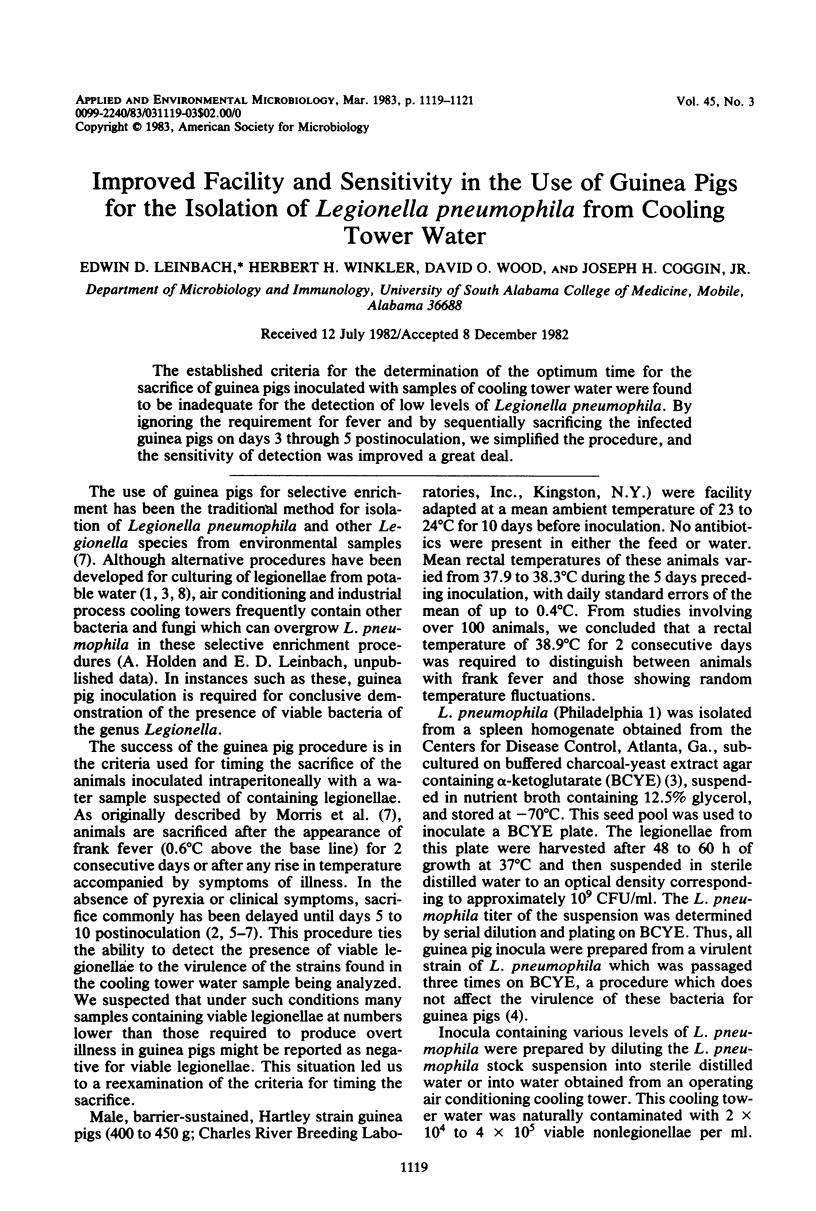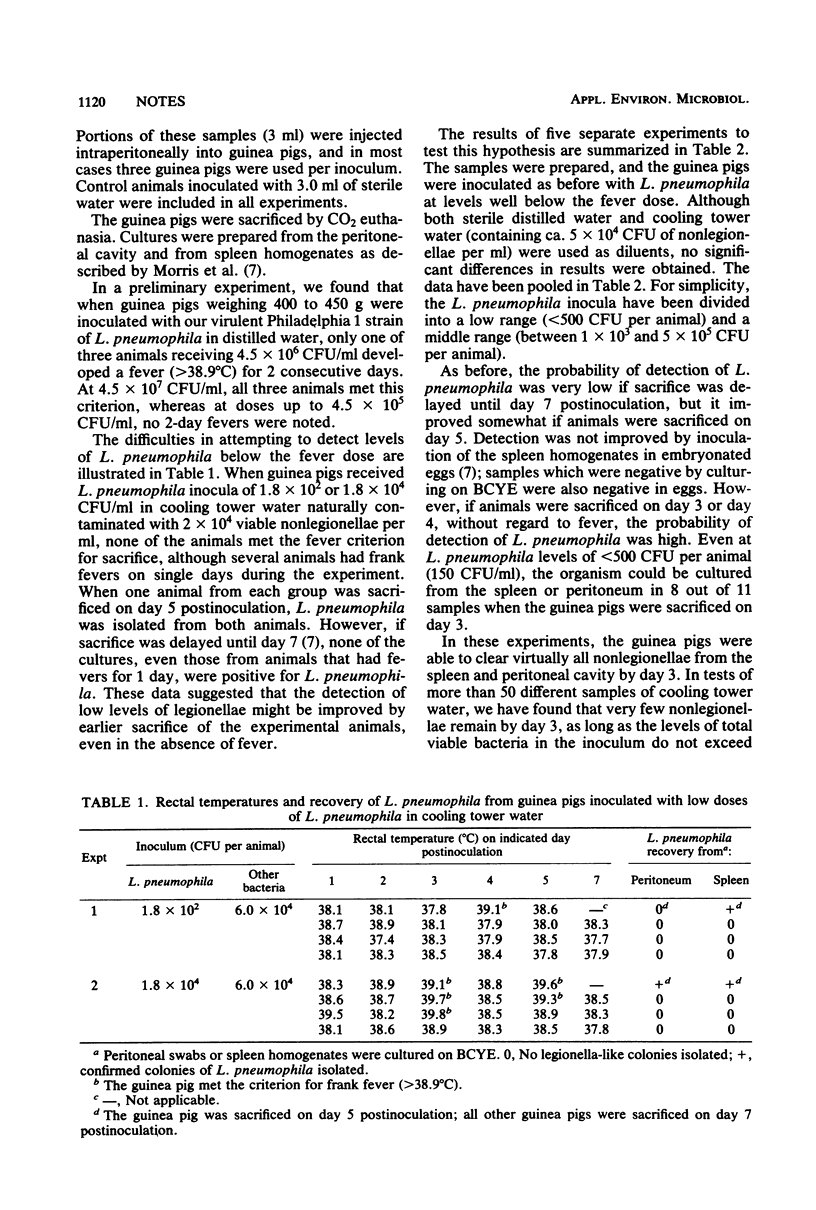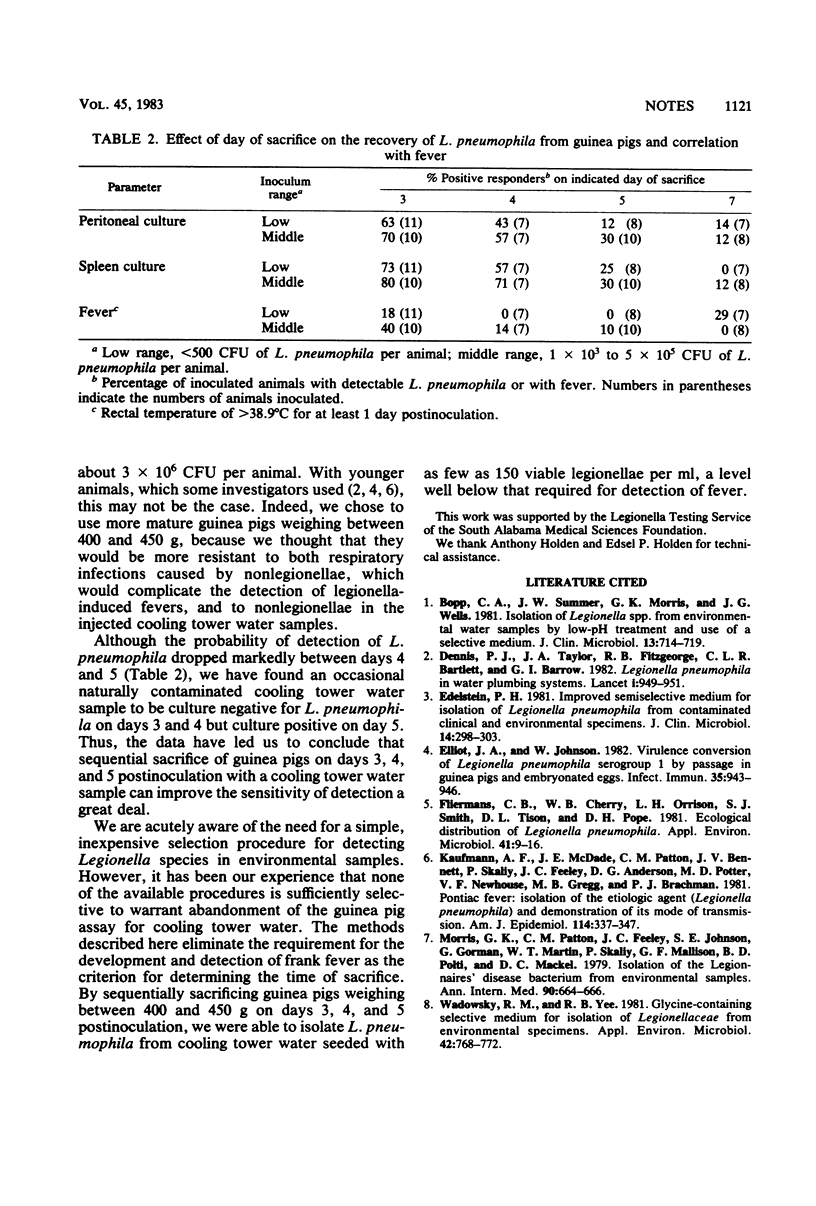Abstract
The established criteria for the determination of the optimum time for the sacrifice of guinea pigs inoculated with samples of cooling tower water were found to be inadequate for the detection of low levels of Legionella pneumophila. By ignoring the requirement for fever and by sequentially sacrificing the infected guinea pigs on days 3 through 5 postinoculation, we simplified the procedure, and the sensitivity of detection was improved a great deal.
Full text
PDF


Selected References
These references are in PubMed. This may not be the complete list of references from this article.
- Bopp C. A., Sumner J. W., Morris G. K., Wells J. G. Isolation of Legionella spp. from environmental water samples by low-pH treatment and use of a selective medium. J Clin Microbiol. 1981 Apr;13(4):714–719. doi: 10.1128/jcm.13.4.714-719.1981. [DOI] [PMC free article] [PubMed] [Google Scholar]
- Dennis P. J., Taylor J. A., Fitzgeorge R. B., Bartlett C. L., Barrow G. I. Legionella pneumophila in water plumbing systems. Lancet. 1982 Apr 24;1(8278):949–951. doi: 10.1016/s0140-6736(82)91944-4. [DOI] [PubMed] [Google Scholar]
- Edelstein P. H. Improved semiselective medium for isolation of Legionella pneumophila from contaminated clinical and environmental specimens. J Clin Microbiol. 1981 Sep;14(3):298–303. doi: 10.1128/jcm.14.3.298-303.1981. [DOI] [PMC free article] [PubMed] [Google Scholar]
- Elliott J. A., Johnson W. Virulence conversion of Legionella pneumophila serogroup 1 by passage in guinea pigs and embryonated eggs. Infect Immun. 1982 Mar;35(3):943–946. doi: 10.1128/iai.35.3.943-946.1982. [DOI] [PMC free article] [PubMed] [Google Scholar]
- Fliermans C. B., Cherry W. B., Orrison L. H., Smith S. J., Tison D. L., Pope D. H. Ecological distribution of Legionella pneumophila. Appl Environ Microbiol. 1981 Jan;41(1):9–16. doi: 10.1128/aem.41.1.9-16.1981. [DOI] [PMC free article] [PubMed] [Google Scholar]
- Kaufmann A. F., McDade J. E., Patton C. M., Bennett J. V., Skaliy P., Feeley J. C., Anderson D. C., Potter M. E., Newhouse V. F., Gregg M. B. Pontiac fever: isolation of the etiologic agent (Legionella pneumophilia) and demonstration of its mode of transmission. Am J Epidemiol. 1981 Sep;114(3):337–347. doi: 10.1093/oxfordjournals.aje.a113200. [DOI] [PubMed] [Google Scholar]
- Morris G. K., Patton C. M., Feeley J. C., Johnson S. E., Gorman G., Martin W. T., Skaliy P., Mallison G. F., Politi B. D., Mackel D. C. Isolation of the Legionnaires' disease bacterium from environmental samples. Ann Intern Med. 1979 Apr;90(4):664–666. doi: 10.7326/0003-4819-90-4-664. [DOI] [PubMed] [Google Scholar]
- Wadowsky R. M., Yee R. B. Glycine-containing selective medium for isolation of Legionellaceae from environmental specimens. Appl Environ Microbiol. 1981 Nov;42(5):768–772. doi: 10.1128/aem.42.5.768-772.1981. [DOI] [PMC free article] [PubMed] [Google Scholar]


